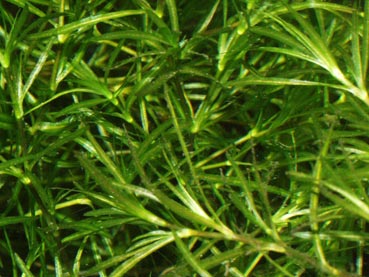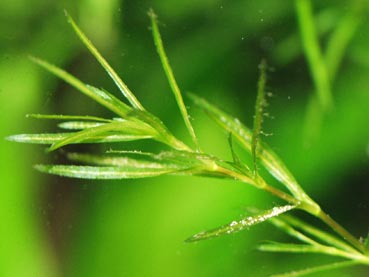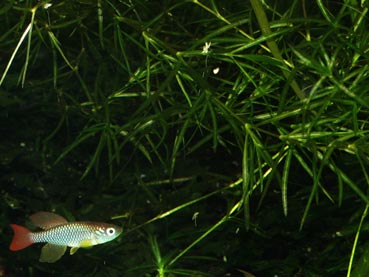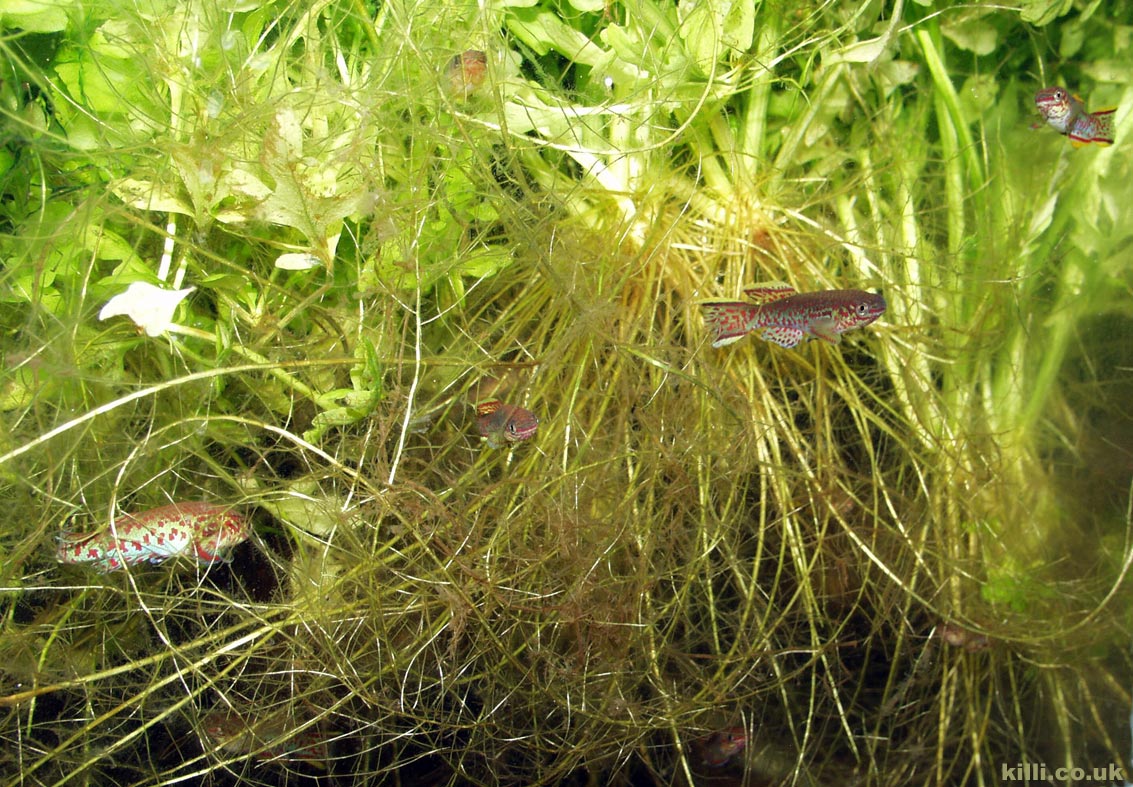
Plants make for a very attractive display, provide cover for fry and timid fish, and colonisation sites for denitrifying bacteria. Plants also support populations of infusoria; fry can be raised in small numbers in a very well-planted tank, without feeding. In a bare bottomed tank, they can make fish feel more secure. Plants can also conceal the somewhat unattractive filters and spawning containers in many killifish tanks. Adult plant spawning killies can reproduce quite easily in a well planted tank. The number of fry can be increased if parents are removed, and/or newly hatched artemia is fed on a regular basis.
Plants need light; light can increase aggression in certain species. Plants create territorial boundaries, also increasing aggression. Plants can introduce snails, hydra and other undesirable organisms. Plants may hide dead fish, or uneaten food, diminishing tank hygiene. Plants will act as a egg-laying site for plant spawners, but these are far harder to collect than eggs laid onto woolen spawning mops.
In short, use a few plants to decorate tanks holding a pair or trio of fish, or a lot of plants (vegetation choked, with strong lighting) when attempting the long term breeding method.
Avoid using plants when growing on a large batch of fry. In such cases a dim tank with no obvious territories is far better: it will reduce aggression, and make it easy to spot if one individual is outgrowing (and often eating) it's tankmates.
Killifish often prefer dim tanks, without intense lighting. This replicates the shaded rainforest streams, the murky ponds, and the choked marshes in which many killies live in the wild. Furthermore, killifish are typically kept in breeding tanks with no substrate, preventing the use of rooted species. appropriate species will either be free floating (such as Hornwort, Najas, Java Moss and Indian Fern) or low-light tolerant epiphytes (Anubias, Java Fern, Bolbitis) perhaps attached to small pieces of bogwood.
Epiphytes may be grown attached to rocks or wood, or left free floating in the tank. These species typically tolerate very low light levels ans are suitable for a dimly illuminated tank.
South East Asia. Java fern is one of the most regularly used plants in a killifish aquarium. It will attach itself to rocks and wood (especially if attached first for a couple months using elastic bands). It forms large clumps that are not palatable to most 'plant eating' species of fish and snail.
Java Fern roots also act as a good spawning substrate for plant spawners; in fact many fish will ignore spawning mops if java fern is present. Propagation: rhizome separation, and through baby plants that appear on existing leaves.
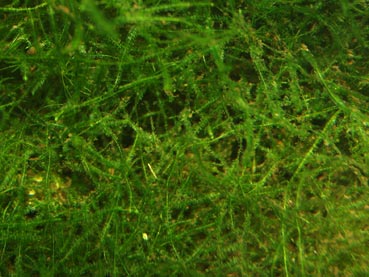
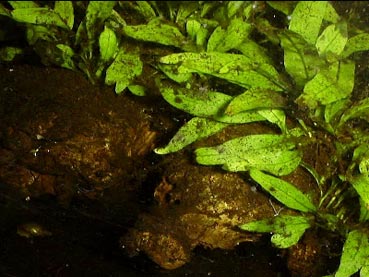
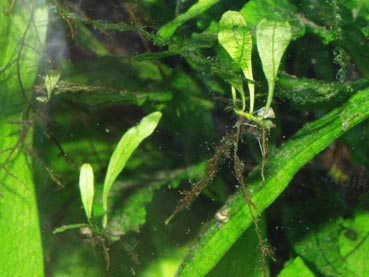
South East Asia. Java moss is not only a great spawning substrate for many plant spawning fish, but is also a good refuge for fry; it provides cover and essential infusoria. This plant is quick growing in or out of water, and like java fern will attach itself to rocks and wood. Some people have even successfully attached it to the glass backs of aquariums.
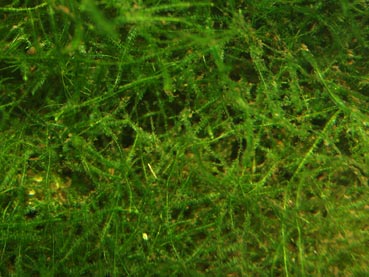
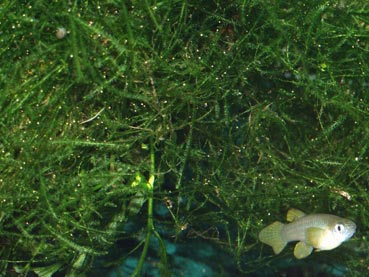
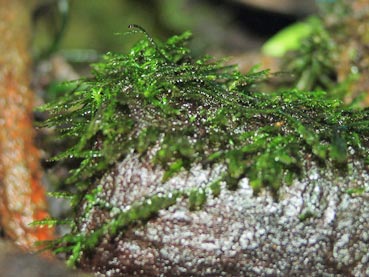
Tropical Africa. African water fern is very similar to Java Fern in its ability to thrive whilst attached to wood and rocks. Bolbitis does however prefer some water flow, and does better in tanks with filter flow directed at it. Propagation: again by rhizome separation. This is a far slower growing plant that most of the others featured on this page.
Buy Bolbitis heudelotii: Amazon | eBay
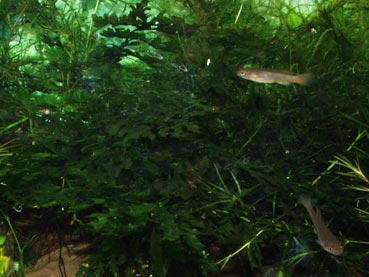
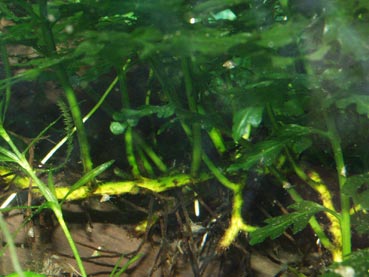

There are many varieties of Anubias, and the smaller species are perfect for the killifish aquarium. They will generally be grown attached to wood and rocks, and will tolerate low-light levels. It is a very slow growing plant, is expensive to buy, and as such it's use in the killi aquarium is as a decorative feature.
Buy Anubias plants: Amazon | eBay
Species that float around the tank (often near the water's surface) typically grow very quickly, and as such are great for absorbing nutrients from the water. These plants do require light, but grow in dense clumps, creating plenty of shade in the tank below.
Ceratopteris can be grown planted, or as a free floating plant, and will develop quite different foliage depending on it's position. It does prefer softer water, and will not thrive in some tank conditions. It is a very quick growing plant, forming dense clumps; most killifish keepers will use it as a floating plant with long nests of tangled roots trailing down and shading the tank. Very useful in long-term /permanent breeding set-up (see top of page for image).
Buy Ceratopteris: Amazon | eBay
Hornwort is often sold as a cold water plant, but works very well indoors too. The foliage will change significantly once brought inside, with the needle-like leaves becoming much finer. The plant itself is free floating, and an exceptionally fast grower. In good light, Hornwort requires regular thinning out: if left unattended it will rapidly fill a tank; great for long term breeding set ups, but may create too much shade for plants like Anubias on the tank floor.
Hornwort just keeps growing, sometimes creating side shoots. Some strands can grow to be many feet long.
Watch carefully when bringing hornwort inside, as it may contain undesirable algaes, predatory insect larvae or snails.
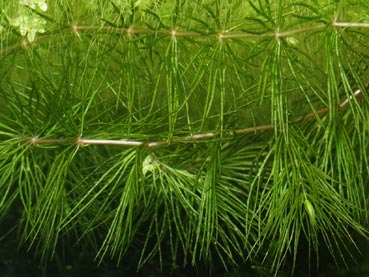
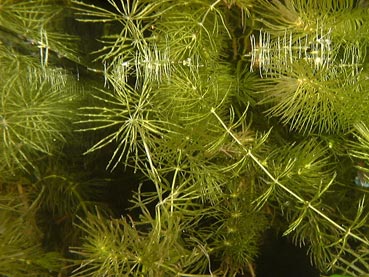
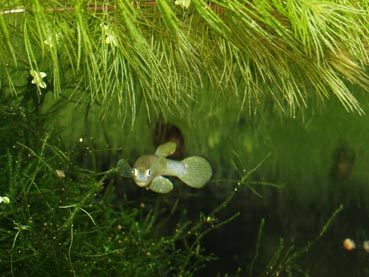
There are almost 40 species of Najas described, and many may be suitable for aquarium use. Najas is rather like hornwort in it's use in the aquarium, generally floating around the mid and upper levels of the tank. It is more delicate than Hornwort, and readily breaks apart, the pieces then grow into new strands. Najas is an attractive plant, and one that is more manageable than Hornwort.
